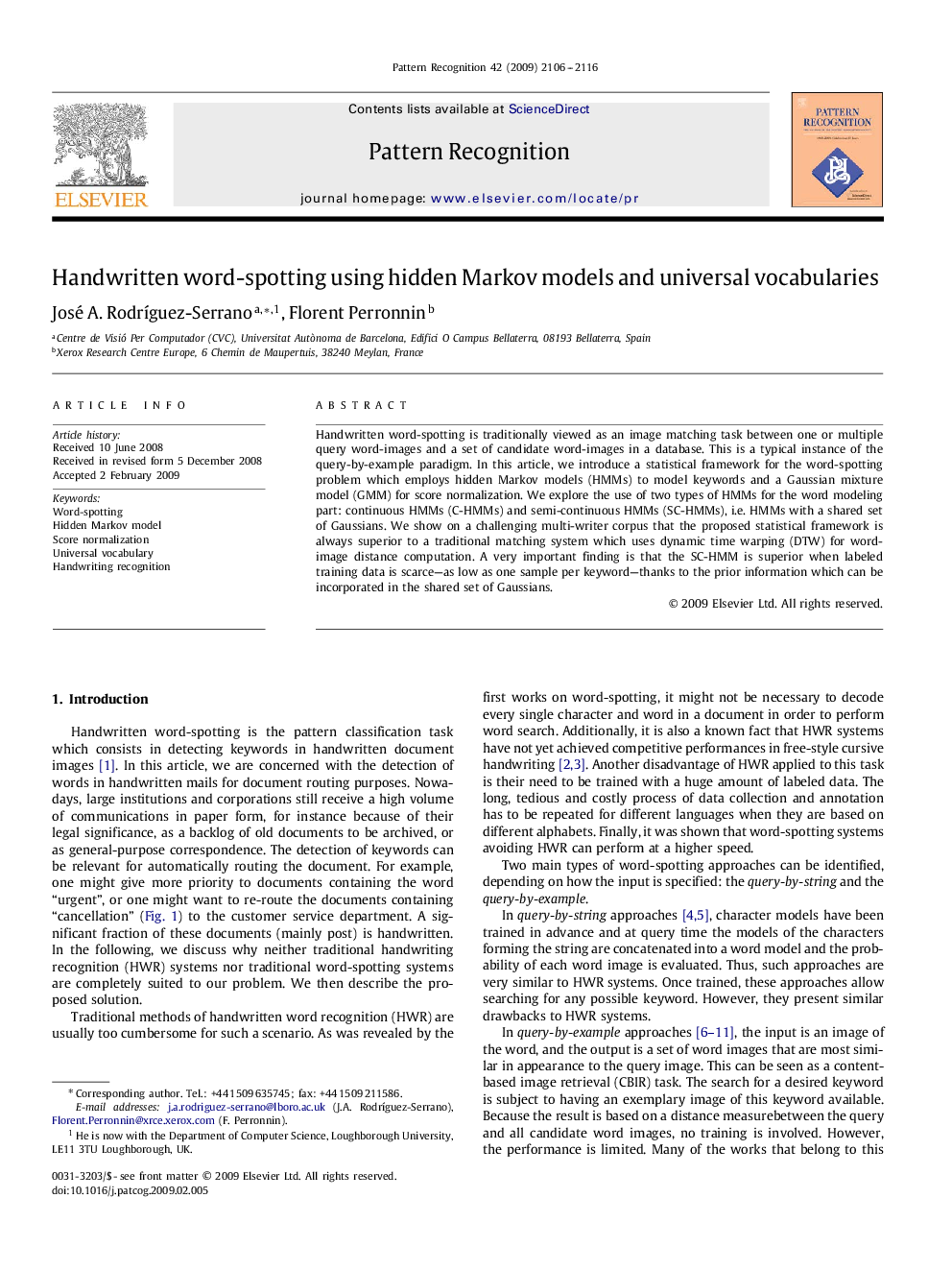| Article ID | Journal | Published Year | Pages | File Type |
|---|---|---|---|---|
| 531484 | Pattern Recognition | 2009 | 11 Pages |
Handwritten word-spotting is traditionally viewed as an image matching task between one or multiple query word-images and a set of candidate word-images in a database. This is a typical instance of the query-by-example paradigm. In this article, we introduce a statistical framework for the word-spotting problem which employs hidden Markov models (HMMs) to model keywords and a Gaussian mixture model (GMM) for score normalization. We explore the use of two types of HMMs for the word modeling part: continuous HMMs (C-HMMs) and semi-continuous HMMs (SC-HMMs), i.e. HMMs with a shared set of Gaussians. We show on a challenging multi-writer corpus that the proposed statistical framework is always superior to a traditional matching system which uses dynamic time warping (DTW) for word-image distance computation. A very important finding is that the SC-HMM is superior when labeled training data is scarce—as low as one sample per keyword—thanks to the prior information which can be incorporated in the shared set of Gaussians.
